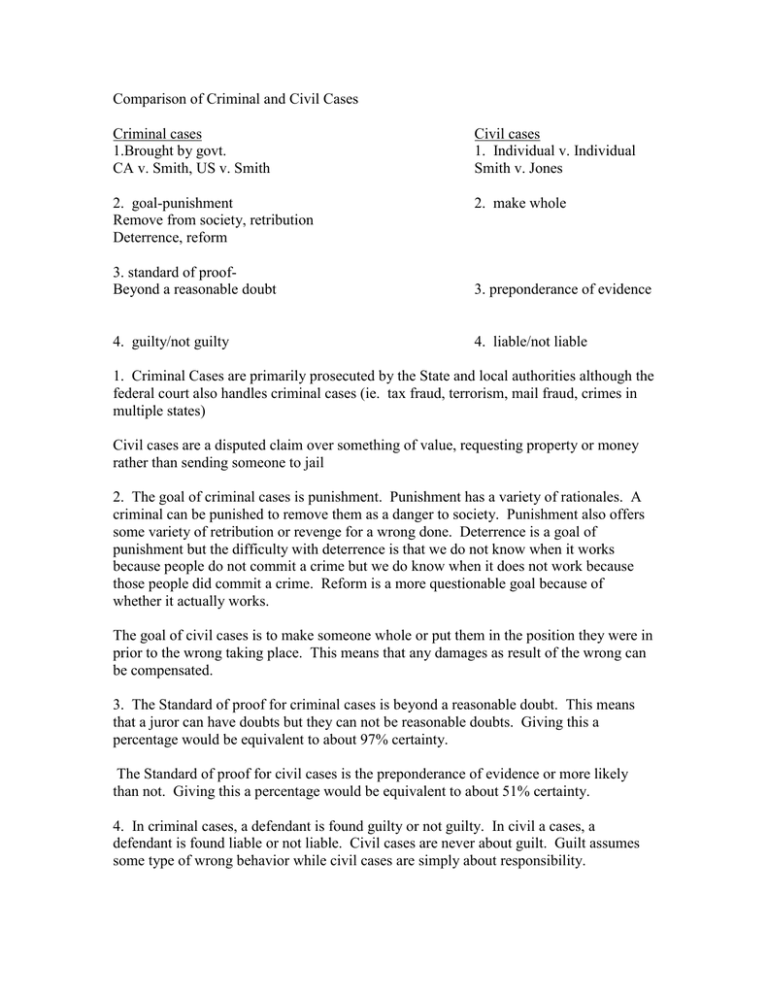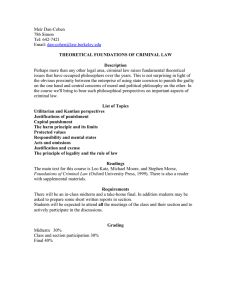Notes on Judiciary
advertisement

Comparison of Criminal and Civil Cases Criminal cases 1.Brought by govt. CA v. Smith, US v. Smith Civil cases 1. Individual v. Individual Smith v. Jones 2. goal-punishment Remove from society, retribution Deterrence, reform 2. make whole 3. standard of proofBeyond a reasonable doubt 3. preponderance of evidence 4. guilty/not guilty 4. liable/not liable 1. Criminal Cases are primarily prosecuted by the State and local authorities although the federal court also handles criminal cases (ie. tax fraud, terrorism, mail fraud, crimes in multiple states) Civil cases are a disputed claim over something of value, requesting property or money rather than sending someone to jail 2. The goal of criminal cases is punishment. Punishment has a variety of rationales. A criminal can be punished to remove them as a danger to society. Punishment also offers some variety of retribution or revenge for a wrong done. Deterrence is a goal of punishment but the difficulty with deterrence is that we do not know when it works because people do not commit a crime but we do know when it does not work because those people did commit a crime. Reform is a more questionable goal because of whether it actually works. The goal of civil cases is to make someone whole or put them in the position they were in prior to the wrong taking place. This means that any damages as result of the wrong can be compensated. 3. The Standard of proof for criminal cases is beyond a reasonable doubt. This means that a juror can have doubts but they can not be reasonable doubts. Giving this a percentage would be equivalent to about 97% certainty. The Standard of proof for civil cases is the preponderance of evidence or more likely than not. Giving this a percentage would be equivalent to about 51% certainty. 4. In criminal cases, a defendant is found guilty or not guilty. In civil a cases, a defendant is found liable or not liable. Civil cases are never about guilt. Guilt assumes some type of wrong behavior while civil cases are simply about responsibility. Statutory Law-laws drafted by legislature and interpreted by judges, codified law Common Law-judge made law, law that has developed for hundreds of years in the form of judicial opinions Stare Decisis –“let the decision stand”-important principle of American law because provides continuity and predictability, requirement that previous decisions be “allowed to stand” and continue to be followed Precedence-must follow previous decisions





